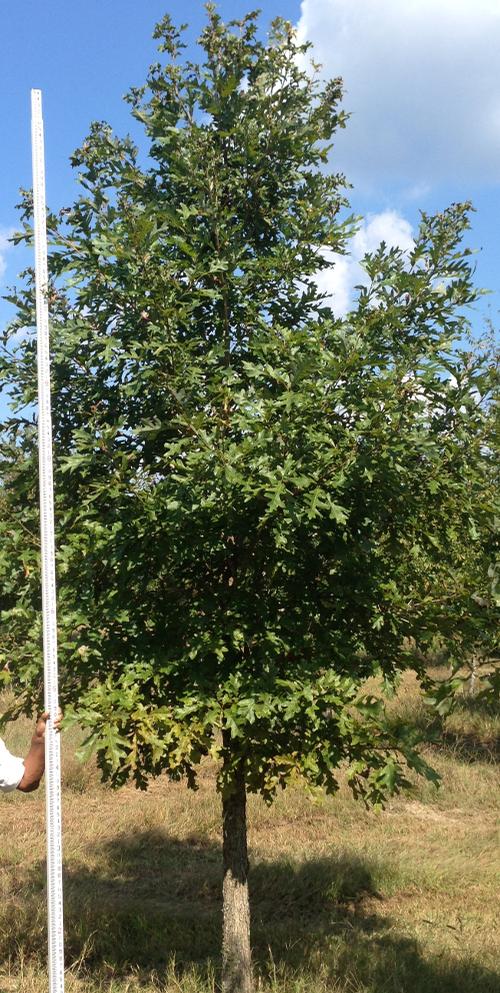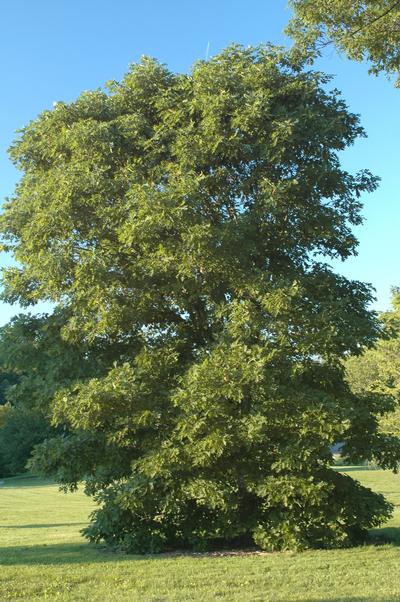Quercus alba
White oak is a stately, medium to slow-growing hardwood tree putting on 12'-15' of growth in 10-12 years. This native is well worth the time invested for it develops into a magnificent tree for large areas in the landscape. This deciduous tree is pyramidal in youth, becoming broad and rounded with age. The leaves are fingerlike, lobed with rounded tips, and no bristles. As new leaves unfold in spring, they are pinkish-gray, changing to dark green in summer. Fall color can be reddish-purple, eventually turning brown.
Male catkins produce pollen for pollinators. Acorns form in late summer and feed a host of critters including woodpeckers and other birds, as well as mammals. The trees provide nest sites for birds and pollen for pollinators. Wood is used to make furniture, flooring, and wine and whiskey barrels.
Use in large lots, parks, and naturalized areas.
- A stately shade tree
- This handsome native has a broad, rounded habit
- Oval-shaped acorns
- Category:
Tree,
Native
- Hardiness Zone: 3-9
- Height: 80-100 ft
- Spread: 50-80 ft
- Foliage Color:
Dark Green
Login for pricing




